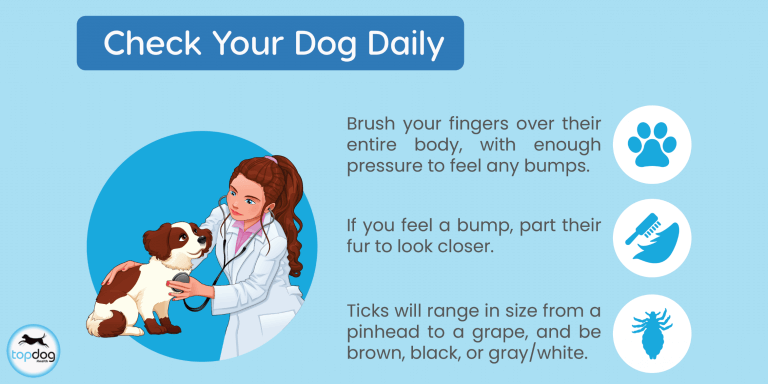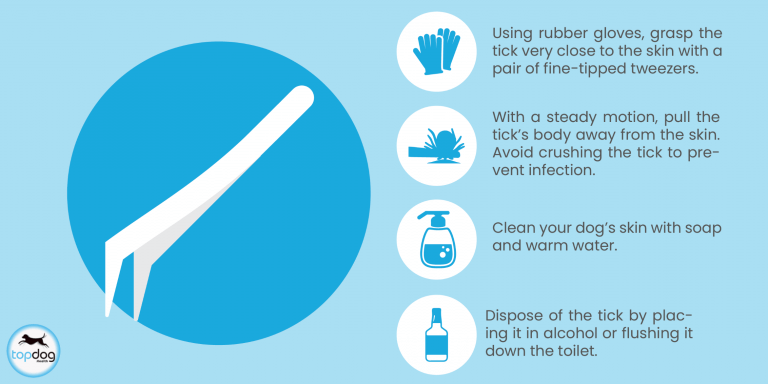Spring is in full swing, which means warmer weather, longer days, and more outdoor adventures with your pup. It also means tick season is upon us.
Most conscientious dog owners will give their pup a once-over for ticks after a trail run or a romp in tall grass, but ticks are tricky little guys. If you find one, it’s important to know how to remove it properly. And if your dog is exposed, it’s important to be able to spot the symptoms of different tick-borne illnesses (did you know many of them bring on symptoms similar to arthritis?).
Here’s everything you need to know about how to protect your dog from ticks, what to do if you find one on your dog, and how to identify symptoms of tick-borne illnesses.
Common Canine Tick-Borne Diseases
Here are four of the most common types of tick-borne diseases in dogs (most of which wreak absolute havoc on your dog’s joints), and the symptoms to look out for.
-
Lyme Disease
Transmitted by the deer tick, it can cause stiffness, lameness, swollen joints, loss of appetite, fever, and fatigue. Symptoms may not surface for months after transmission.
-
Canine Ehrlichiosis
This is the most common and one of the most dangerous tick-borne diseases in dogs. Caused by the brown dog tick, your pet may not show signs of the disease until several months after infected. Symptoms can include fever, loss of appetite, depression, weight loss, runny eyes and nose, nose bleeds, and swollen limbs.
-
Canine Anaplasmosis
AKA “dog fever,” this is transmitted from the deer tick. Symptoms are similar to other tick-borne diseases including fever, loss of appetite, stiff joints, and lethargy, but also can include vomiting and diarrhea. In extreme cases, dogs may suffer seizures.
-
Rocky Mountain Spotted Fever
Comes from the American dog tick, the wood tick, and the lone star tick. Symptoms include fever, stiffness, neurological problems, and skin lesions. Typically the illness lasts about two weeks, but serious cases could result in death.
If you notice your dog displaying any of these symptoms, take them to the veterinarian immediately. If not treated ASAP and properly, these diseases could become serious. Luckily, the majority of dogs respond very well to antibiotic treatment.
How to Protect Your Dog from Ticks
The are two key concepts when it comes to protecting your dog from ticks:
-
Prevention
One of the first things you can do is to educate yourself about the ticks and diseases in your area. This way you’ll know the risks your dog is likely to encounter not only on hikes and adventures, but even in your own backyard.
Next, make an appointment with your vet to discuss the wide array of preventative measures you can take. These include topical medications (often combined with flea medications), tick collars, and vaccines for Lyme Disease.
-
Early Detection
It’s important to check your dog for ticks after you take them on outdoor adventures, and ideally, every day – especially in tick season which is typically spring and summer, and year-round in warmer climates.
How to check your dog for ticks:
- Brush your fingers through their fur over the entire body, applying enough pressure to feel any small bumps. Be sure to check between their toes, behind their ears, under their armpits and around their tail and head.
- If you do feel a bump, pull the fur apart to take a closer look. A tick that has embedded itself will vary in size, ranging from the size of a pinhead to a grape depending on how long it’s been attached. Ticks are usually black or dark brown in color, but will turn a grayish-white after feeding.
What To Do If You Find a Tick on Your Dog
If you do find a tick on your dog, the first step is to remove it – carefully and immediately. Removing ticks is a delicate operation because, if done improperly, it’s easy for a piece of the tick to break off and remain in your pup’s skin, which can lead to infection.
Here’s how to safely and effectively remove a tick from your dog:
- Remove the tick right away. Infection of tick-borne illnesses can occur after 24 hours of exposure, so don’t wait.
- Put on rubber gloves to protect yourself from possible infection.
- Grasp the tick very close to the skin with a pair of fine-tipped tweezers.
- With a steady motion, pull the tick’s body away from your dog’s skin. Avoid crushing the tick to prevent infection.
- Dispose of the tick by placing it in alcohol or flushing it down the toilet.
- Clean your dog’s skin with soap and warm water.
Instead of doing this yourself, you can also take your pup to a veterinarian who can safely perform the task, as well as show you how it’s done.
By following these few simple steps, you’ll ensure your dog stays safe and healthy this spring, while still enjoying all the fun in the sun this beautiful season has to offer.














